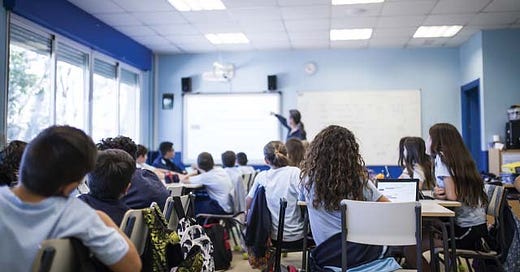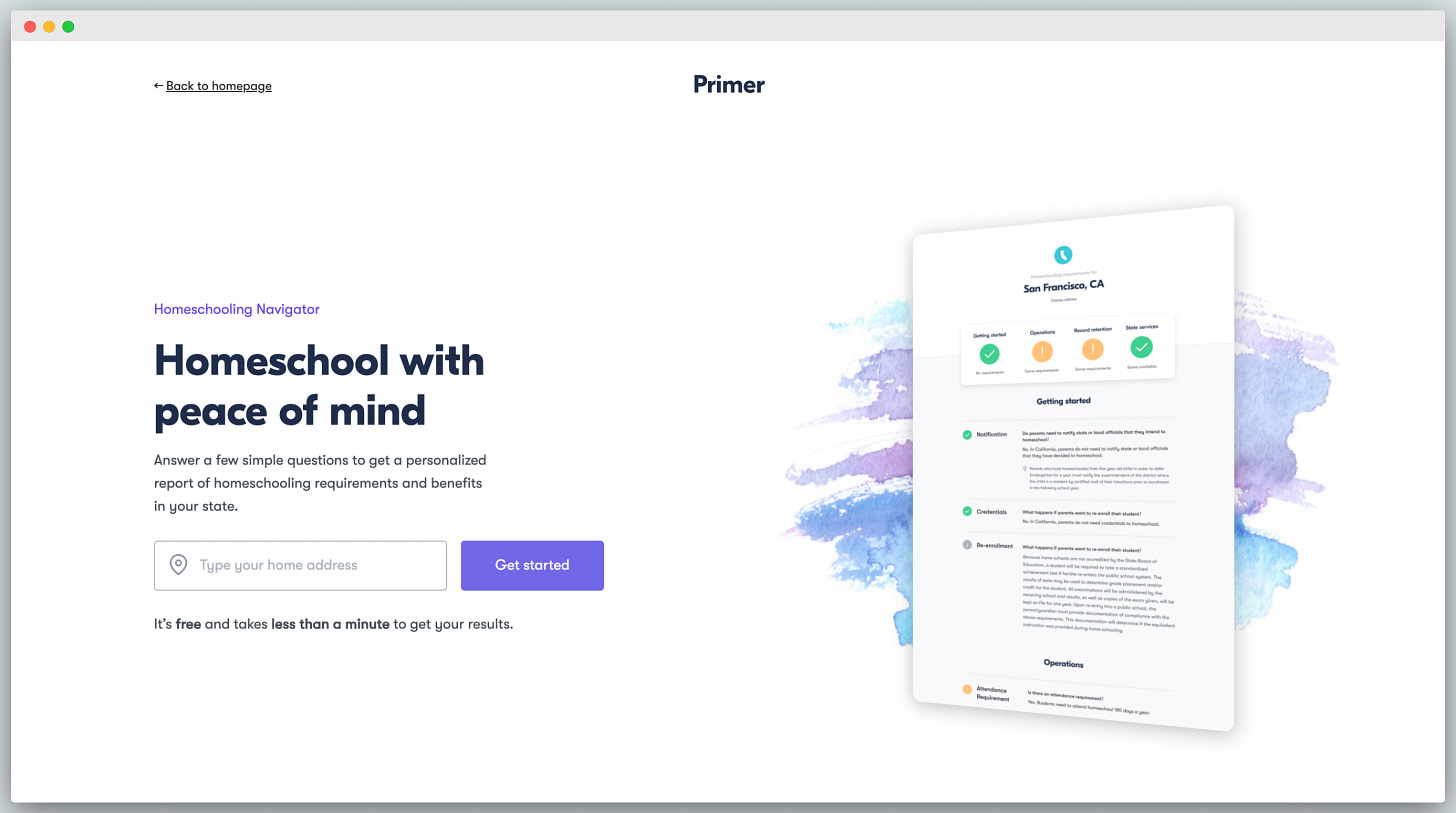The Rise in Alternative Education
Alternative forms of education are shifting the learning landscape
Education Overview
Years ago, smartphones were seen as a threat to formal education and warranted a detention if a student was caught with one during class. Nowadays, teachers are embracing the digital capabilities of smartphones and other devices to improve the learning experience for students. This trend was rapidly accelerated by COVID-19, as stay-at-home orders forced 1.2 billion children out of the classroom. In the absence of a physical learning setting, schools have adopted digital and online learning models. This has led to significant growth in education technologies (edtech), which have already been prevalent before the onset of the pandemic. The global edtech market was $75 billion in 2019, and is expected to grow at a compound annual rate of 20% over the next seven years. As schools begin to return to a state of normalcy, they will continue to utilize edtech to improve the quality of education. Edtech has also enabled many students to move away from the traditional learning model and engage in alternative formats of education. I will be covering the emergence of alternative education models, types of alternative education, and promising startups that have the potential to change what it means to learn for students.
What is Alternative Education?
Innovations in technology and remote learning trends have allowed students to learn outside of school through alternative education methods. Alternative education is any education program or system that is separate from a mainstream education program or system, such as a public or private school. Alternative education is an opportunity for students who are not having success in the traditional school system to be in an environment that caters to their individual learning needs. These programs are generally intended to support marginalized groups of students, such as students with disabilities, delinquent teens, and those with high-risk health behaviors. However, alternative education has become increasingly popular with the general K-12 population as they seek after a more individualized and specialized form of education. Examples of alternative education include homeschooling, community-based learning, and e-learning.
The Demand for Alternative Education
The Declining Quality of Traditional Education
Many students have flocked to alternative education because they are unsatisfied with the quality of traditional education systems. According to a 2016 EdNext Poll, only 14% of Americans said that they would give their local public school an ‘A’ grade. In 2019, reading scores decreased at 8th grade in more than half of the states and at 4th grade in more than one-third of the states since 2017. Less than ⅖ of both the 4th and 8th grades had scored a ‘proficient’ score or higher, according to the National Assessment of Educational Progress. These effects are magnified in disadvantaged populations such as minority and low-income households. Research done by the National Center for Education Statistics in 2009 and 2011 showed the Black and Hispanic students’ NAEP math and reading assessment at the 4th and 8th-grade level were on average 20 test-score points lower, or by about two grade levels. Despite schools receiving additional funding and integrating more technology, education quality remains stagnant or declining in schools, especially for students with adverse backgrounds.
Key Drivers
Several factors underlie the lagging quality of traditional education. Schools lack adequate resources to support strong learning outcomes on a per-student basis. With an average primary school class size of about 21 in the U.S, teachers have little ability to personalize the unique learning needs of each student. Disparities in learning outcomes are even larger for disadvantaged populations. Research says that students from low socio-economic backgrounds are twice as likely to be low performers in school than a student from a high socio-economic status. Many districts are also struggling to find adequate physical space to accommodate a large population of K12 students. In New York City, about 575,000 students, or more than half of all students, attended public schools that were at or past 100% capacity in 2018. As a result, there has been decreasing enrollment in both public and private schools. Public school enrollment in fall 2020 was 48.1 million students, which was lower than all years from 2010 to 2019. The percentage of students enrolled in private schools decreased from 11 percent in fall 1999 to 10 percent in fall 2017. A growing number of students are therefore looking to have their educational needs satisfied through alternative means. Although there are many ways that students can learn outside of the classroom, we have identified three main types: homeschooling, community-based learning, and e-learning.
Homeschooling
According to the National Center for Education Statistics, just 850,000, or 1.7% of all K12 students were homeschooled; in 2012, that number grew to 3.3%. However, the pandemic has sparked further interest in homeschooling and alternative school arrangements. However, a recent Census Bureau report found that the proportion of households with homeschooled children doubled between the spring and fall of 2020, up from 5.5% to 11.1%. Homeschooling gives parents the flexibility to teach on their own schedule and their kids the ability to learn at their own pace. As more employees are working from home, this gives many of those who are parents the time and capacity to teach their children. Homeschooling also eases concerns about negative peer pressure, safety, dissatisfaction with academic instruction at school.
Community-Based Learning
In an effort to make learning more personalized, there has become an increasing adoption of a community-learning approach. Micro-schools and learning pods are students that gather in a small group to learn with each other, generally under the instruction of an adult. Pods are often formed when families in a neighborhood or in close proximity bring children similar in age together. Micro-schools tend to provide a much more personalized and self-directed learning experience for the students involved. As compared to a large class, students in such small groups have a better chance to get help in areas they are struggling in and get tailored support from the teacher. Lower student-teacher ratios have been found to have a positive impact on academic achievement.
E-Learning
E-learning is utilizing electronic technologies to access educational curriculum outside of a traditional classroom. There are also many different elements that can make up an e-learning program, such as live or pre-recorded lecture content, video, quizzes, simulations, games, activities, and other interactive elements. Online education is easily accessible, as students only need an internet connection and don’t need to be present in a physical location. Research says that e-learning requires 40-60% less time to learn than in a traditional classroom setting because students can learn at their own pace, as they can choose to re-read certain areas and speed through other concepts.
Startups
There are thousands of startups across the world that are using technology to allow students to learn wherever, however they want to. Here are some promising new startups that we see have the potential to accelerate the growth in alternative education.
Primer
Primer offers online communities for kids to join based on their particular interest, and work on projects that are tied to those interests. Kids enter rooms, live audio chat spaces for kids to interact with other kids and solve problems together. Students can also work on a Pursuit, a 6-week long project where students collaborate with each other on. Primer is sold as a monthly subscription for $49 a month for one kid, then $19 a month for each additional kid. Primer raised a $3.7 million seed round, which is invested by the Founders Fund, Village Fund, and angel investors.
Emile
Emile is a digital learning platform that offers on-demand high school classes, accredited or not. Users have access to high-quality content for a variety of subjects. Emile began as a way to help students prepare for AP exams, as a good score can help a student get college credit and save them thousands of dollars. Emile also offers an accredited set of classes that can be used in high school. Emile is sold as a subscription for $9.99 a month. Emile has served over 50,000 students to date. Students can engage in 20+ classes for high school credit or as a supplement, ranging from AP-level courses to Financial Literacy courses. Emile just raised a $3 million seed round led by venture capital firm Kleiner Perkins, which has also funded Duolingo and Coursera.
Mindsets Learning
Mindsets Learning is an instructional platform which teaches math and science through collaborative and interactive problem-solving. Using real-world problems, Mindsets Learning makes learning relevant, modern, and engaging for students across all ages. Mindsets Learning is suitable for online, hybrid, and in-classroom learning. School and district plans range from $15-$45 a month, and the individual teacher plan is $249 a year. More than 3 million students from all U.S states and 81 countries are using Mindsets Learning. The company’s funding round and amount is undisclosed.
Risks
Despite the increasing integration of education technologies in alternative education, there are still some risks that need to be considered. With pace-driven personalization, some parents report that their children are spending too much time in front of computer screens. This is particularly a problem for families who already struggle to limit their children's screen time at home. Moreover, economically disadvantaged families won’t be able to access technologies that require usage of the internet. There is therefore a struggle to get e-learning products and other technologies into these households, which suffer the most from poor academic achievement and opportunity. There are also questions over the efficacy of personalized learning, as it can lead to an overreliance on technology, reduce meaningful interactions with peers, and eliminate the use of standardized tests, GPA, and other common measures used in college and job applications. Educational researchers are still trying to figure out how to exactly measure the success of alternative forms of learning.
Conclusion
The unique circumstances of COVID-19 may largely account for the large growth in homeschooling and other alternative learning methods, but new capabilities due to technology and shifting education trends suggest that alternative education is here to stay. Many edtech startups are capitalizing on this emerging market opportunity, and some have already raised large amounts of funding this year. In October, Outschool, a K12 education marketplace platform, announced a $110M Series D raise with a $3 billion valuation. Kajabi, an e-commerce platform for entrepreneurs looking to sell online courses, raised $550 million in May. Language learning app Duolingo launched an IPO in July, notching a valuation of $6.5 billion. Learning does not have to be sitting in a classroom and reading textbooks; while it won’t replace traditional school systems, alternative education and the emerging technologies that are supporting them are offering the capability for students to learn the way that works best for them, whether that be in the classroom, on Zoom, at home, or elsewhere.











